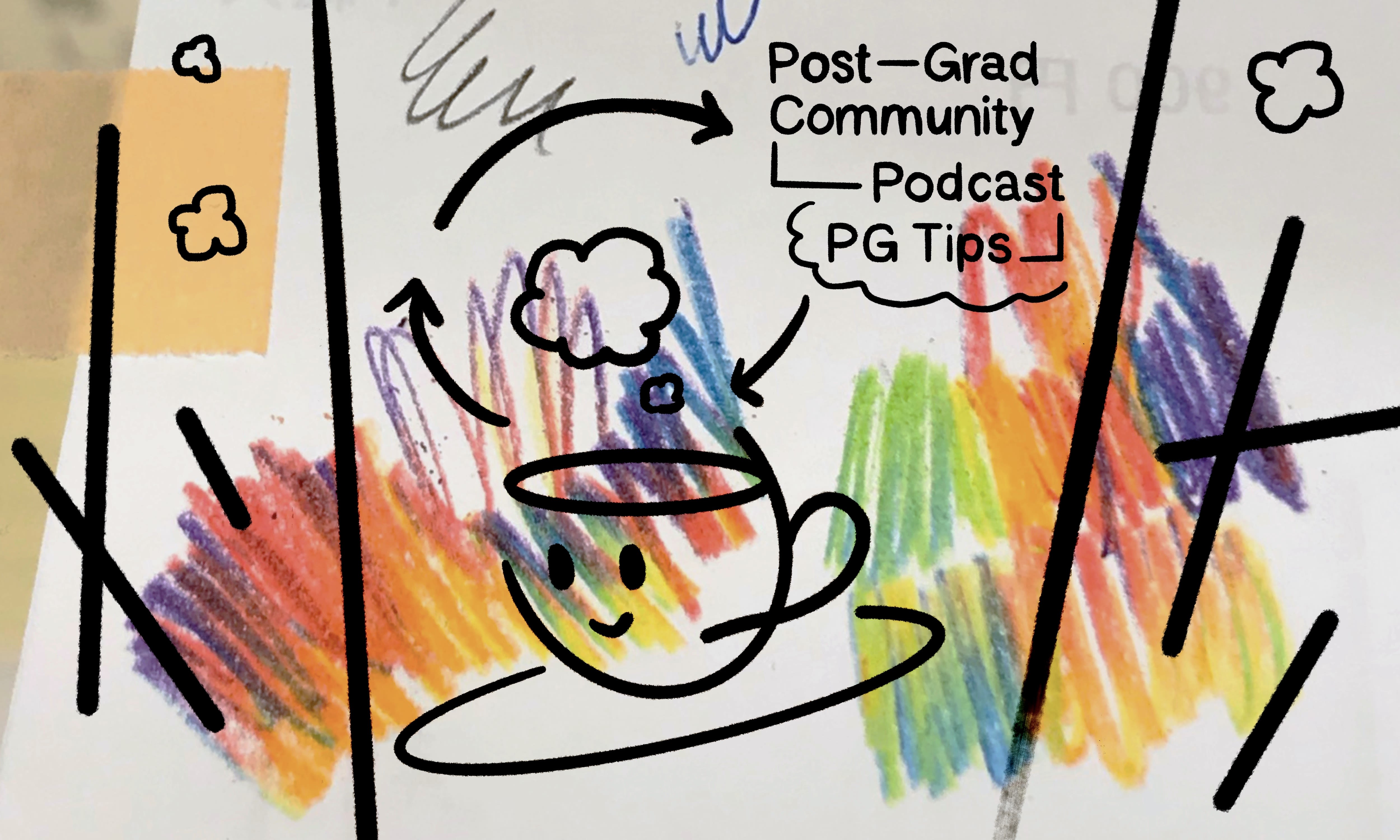
PG Tips Podcast Series, Ep5 with Santa Ramaherison, MA Material Futures CSM

- Written byPost-Grad Community
- Published date 22 September 2022

Podcast host Yulin Huang, former UAL Post-Grad Community Ambassador and MA Fine Art, Central Saint Martins Alum, interviews MA Material Futures (CSM) student Santa Ramaherison for Episode 5 of PG Tips.
For the fifth episode of the PG Tips podcast I was very excited to have a conversation with Santa Ramaherison, who was in his final year of his MA Material Futures course (CSM) at the time of recording. In these twenty minutes we dug into what the course really entails - “where science, technology and design collide”, as described on the UAL website.
Making a somewhat difficult transition from his BA in Product Design, he describes how he was suddenly met with a lot of freedom in the course that was initially challenging but fundamentally exciting. Finding boundaries, he said, was very helpful with reining in the infinite possibilities for each project and getting out of his comfort zone throughout the two years.
Constantly crossing boundaries between all these different disciplines, Santa walked me through some of the projects he undertook during this dynamic course. A brief that was given in the last year focussed on non-human centric design, which inspired him to create an astonishing translator for plants - one that could tell its stresses, such as the need for water and the imminent presence of various dangers. The culmination of this project involved the essential collaboration with scientists. I was particularly curious about this part of the process. I wondered, was this a challenge? Was it intimidating, to find experts in the field and approach them with your idea? It was, but Santa also emphasised how he plucked up the courage and ‘just did it’, emailing experts he found from reading numerous research papers. This was quite inspiring to hear - especially with the end result becoming such a success.
Another fascinating point was how Santa defined his role as a designer in these projects - designing the concepts rather than completely inventing a new thing, digging through years of research. Amongst his ideas - which are mostly centred around sustainable innovation - most are proposals that stood with function. Even if they appear to be speculative, it is best that they are still functional in the end for potential clients.


Below is a Santa’s description of his project, ‘A drop in the Ocean’:
Over absorption of atmospheric carbon dioxide by the ocean lowers the ocean's pH, causing a 30% increase in ocean acidity since the industrial era. Scientists, policy makers, and engineers have been, for the past decades, researching solutions to the issue, grouping these into what is called Ocean Negative Emission Technologies – these propositions need financial help from Governments and years of planning to be put in place. So how could we, as a collective, help with ocean ecosystems regeneration from an individual to a global scale ?
This project tackles the issue of Ocean Acidification by replacing fossil fuel based materials used for takeaway trays with CO2 capturing materials (oyster shells), CO2 absorbing minerals (Olivine) and seaweed, to help marine ecosystems at its end of life.

In awe of the project, I asked how he had overcome such challenges during the process. Tutors encouraged a lot of collaboration, he explained, as you can’t be every role at once. It’s usually valuable for a really specific skill, such as moulding - which he struggles with sometimes. This sentiment in skill-swapping within such a supportive community to realise each other’s projects was a reassuring sentiment to be reminded of - that you are not alone and it is okay to receive help sometimes. After all, you are designing a collaborative future!
As I pictured the carefully crafted, biodegradable packaging melting away in the ocean (in all its oyster shell, natural seaweed binder, and olivine glory), I wished Santa the best - for his own and the world’s future via sustainable innovation design.
Many thanks to Santa for the insightful conversation!
Related links
- Follow Santa on instagram
- View Santa's Graduate Showcase profile
- Read Next Nature Network's article on 'A drop in the Ocean'
- Post-Grad Community PG Tips Podcast
- Yulin Huang on Instagram
- Post-Grad Community at UAL
Post-Grad Community Podcast: PG Tips
The PG Tips podcast is an open and safe space for people to come on and have a chat about their current work and research interests (and possibly offer some Tips/ advice for the rest of us), forming a fun audio space to listen to. This has been a difficult year for us, but don’t forget that we do have a huge community here at theuniversity. You are not alone - I hope this space will help alleviate some anxieties that come from a still developing practice and possibly spark some inspiration in hearing about other peoples’ research as well.
This series is also for those who are studying with us overseas who might not be able to be on campus right now and are finding it difficult to make new connections.
Get in touch with Post-Grad Community at PGCommunity@arts.ac.uk
UAL Post-Grad Community
Established in 2013, Post-Grad Community is an inclusive platform for all UAL postgraduate students to share work, find opportunities and connect with other creatives within the UAL and beyond. Find out more
Post-Grad Stories
A thriving online magazine of our postgraduate student voices sharing thought-provoking experiences, practices, thoughts and articles about what matters to them.
Download the PDF Guide to writing articles for Post-Grad Stories
Want to write an article? Get in touch with the Post-Grad Community team PGCommunity@arts.ac.uk